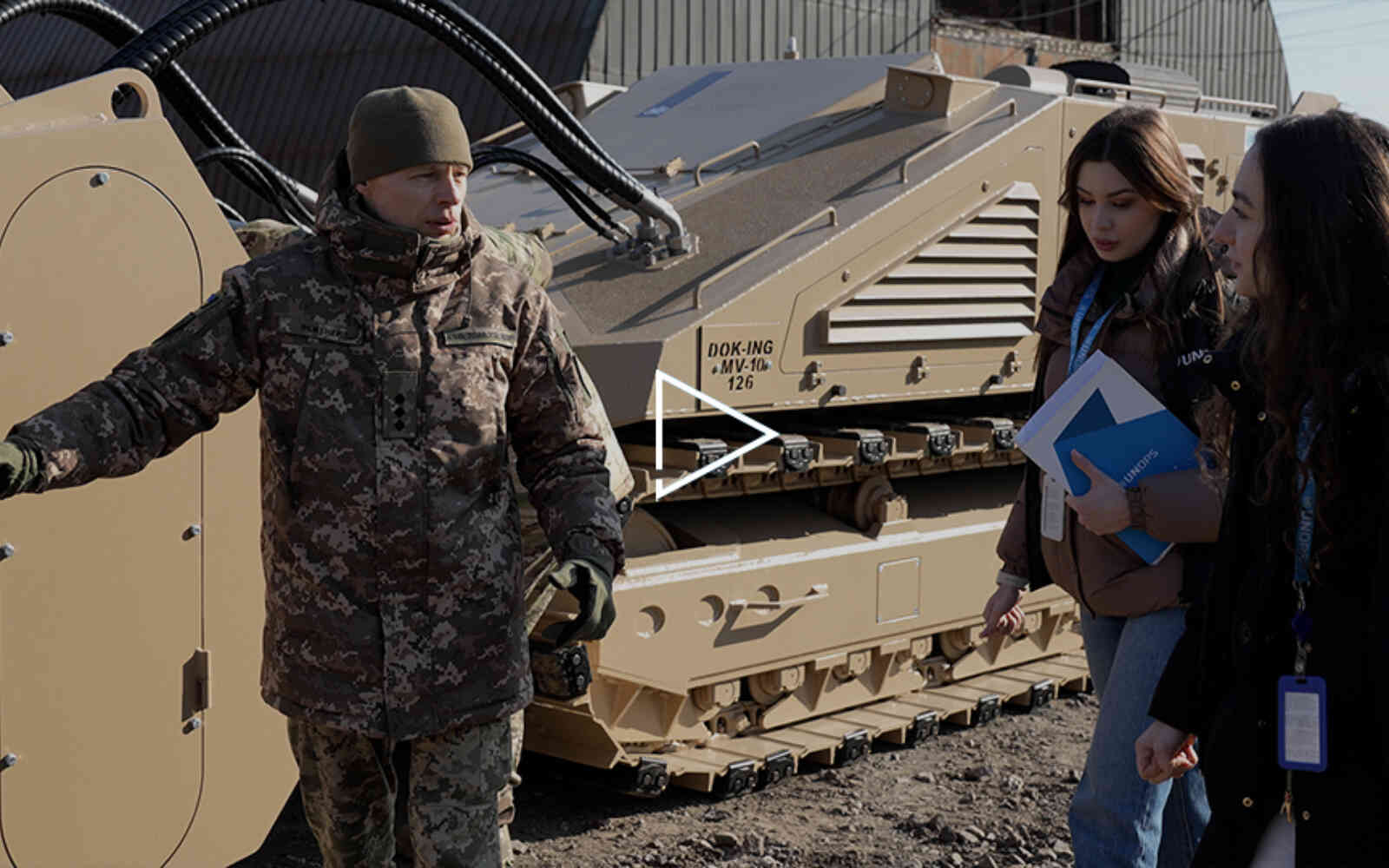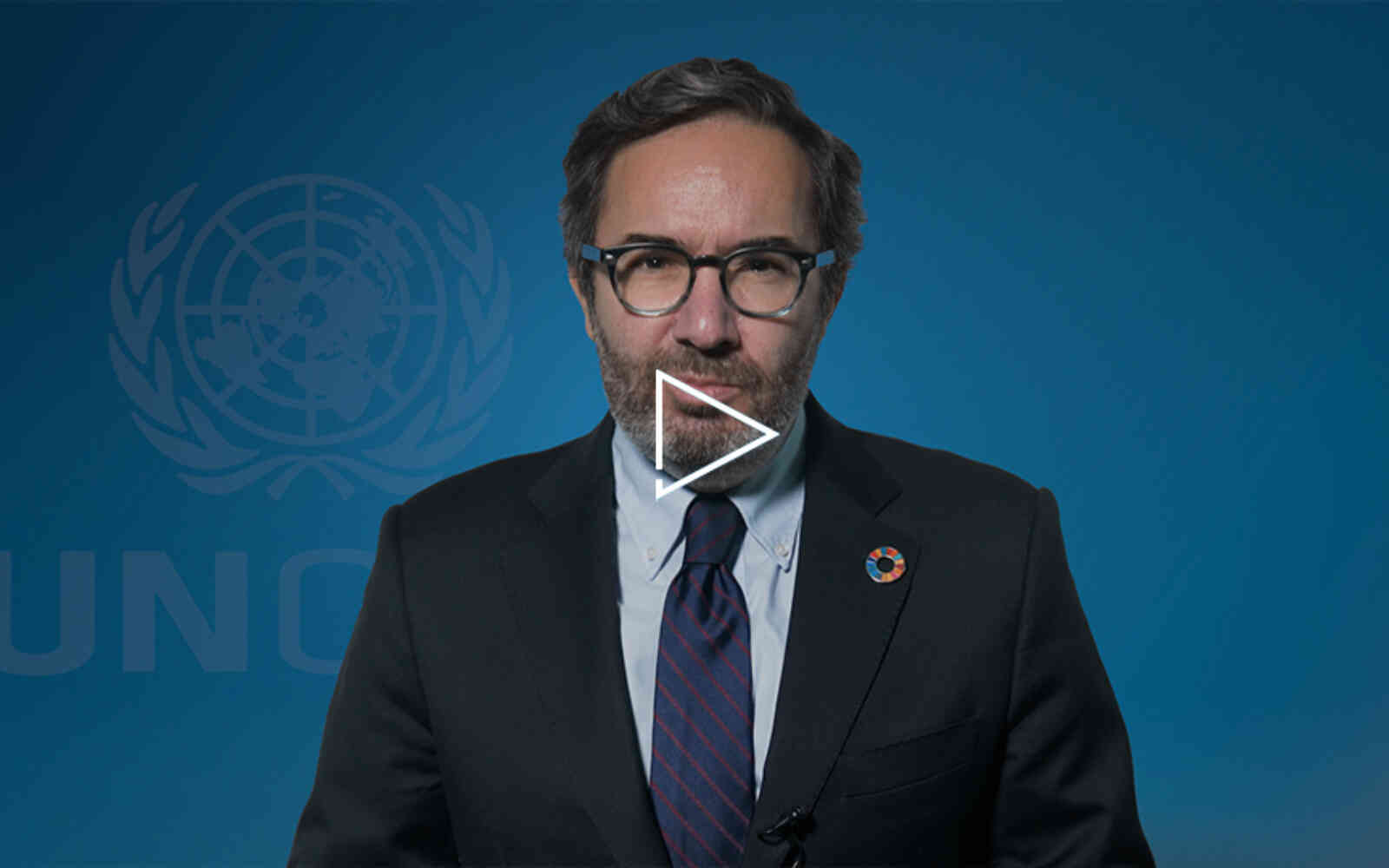The United Nations Office for Project Services (UNOPS)

UNOPS20: Making Nepal Mine Free
To celebrate UNOPS 20th anniversary we will be exploring some of our past achievements. This includes our work in 2006, where following the civil war, Nepal was left littered with landmines and explosive remnants of war.
In 2006, following the end of the civil war, Nepal was left contaminated by landmines, explosive remnants of war and improvised explosive devices. The ten-year conflict between the Government of Nepal and communist rebels ravaged the country, claimed an estimated 15,000 lives, and displaced 100,000 to 150,000 people.
The Comprehensive Peace Accord was signed in November 2006 – signifying an end to one of the country’s most devastating wars. Within the accord, both parties agreed that steps had to be taken in the management of arms, which included the removal of mines planted by the Nepalese Army during the conflict.
A total of 12,070 mines were planted over 53 mine fields during the decade-long fighting. However, the Nepalese Army did not have the provisions or necessary skills to safely remove such a large quantity of mines.
Therefore, they turned to the United Nations for assistance. It was then decided that the United Nations Mine Action Service (UNMAS) in partnership with UNOPS would oversee the training, technical support and financial management of the national demining project.
The first mine was lifted just seven months after the signing of the peace accord. Richard Derieux was part of the UNMAS team in charge of overseeing the entire project. He recalls what it was like in the beginning:
For the first two years we hired a specialized contractor to provide basic training to the Nepalese Army. During the project, we proposed a capacity development programme to the Government of Nepal so that they would have the capabilities to clear their own mines. We implemented the plan carefully, stage-by-stage and by June 2011, the last mine was officially destroyed – we had originally planned this project over five years, so we finished well ahead of schedule. We had just one accident in three years, which is a very good ratio when dealing with such a dangerous job.
The process of demining
The process of demining
Indra B. Bhat joined the Nepalese Army in 1994 as a cadet. He made his way up through the ranks, eventually specializing in military explosives. Of the 53 mine fields created during the war, Indra was involved in the creation six of them. Shortly after the peace accord was signed, Indra got involved in the demining process ‒ something he is very proud to have been part of. He explained the process of training and demining:

"Deminers are trained by using non-live replica mines. After they have successfully completed training, they are taken to a real minefield, with live mines, for practice and clearance, which is done under strict supervision of the field supervisor and guidance of experienced deminers.
"We use metal detectors and other special tools to find land mines. Inside the minefield, we use a marking system to distinguish safe and unsafe areas. Deminers start their work from a safe area. When they detect a signal, the deminer will then investigate with help of tools such as a trowel or vegetation cutter. They must treat every metal signal as a mine. All found mines are destroyed at the end of the day."
All deminers wear personal protective equipment. They must have a rest within every 50 minutes of work and they cannot work more than six-hours per day. It is a very slow and painstaking job, made even worse by hot weather. It is also quite stressful as even a small mistake can lead to injury or death.




Legacy: Nepal after the mines
Legacy: Nepal after the mines
Over the course of three years, the Nepalese Army cleared over 200,000 square metres of minefields, releasing more than 5,300,000 square metres of land for the benefit of the local communities. Richard believes seeing people get back to their lives is the real reward of the job.
“A lot of the mines were planted on agricultural land,” he explained. “As soon as the mines were removed and the certificate confirming the area was now safe was handed over to the community leader, we saw local people go straight back to the farming fields. It was really great to see people getting back to their lives. It's all part of the job, but it is very rewarding.”
Captions
- 1. Metal detector testing area in Nepal. © UNMAS/UNOPS
- 2. Indra, with his field supervisor, wearing blue personal protective equipment. © UNMAS/UNOPS
- 3. Clearance at the Annapurna mountain range. © UNMAS/UNOPS
- 4. Tripwire drill. © UNMAS/UNOPS
The importance of accepting responsibility
The importance of accepting responsibility
Prabin Bahadur Khadka joined the Nepalese Army in 1995. Following the peace accord, he was appointed Chief of Operations for all demining tasks and also acted as the Liaison Officer and the point of contact for UNMAS. He joined UNMAS as civilian in 2010 and left in 2014 to start his PhD in Political Economy at New York University. He highlighted the importance of giving responsibility to the people of Nepal.
“It was probably the most important component, as it gave the Nepalese ownership of the project. It gave them a sense that they were the ones always involved in the decision-making process, especially which mine fields to start with as an initial step.
“The Nepalese Army is a professional organization, but with limited resources. Not only that, but as Nepal is not part of the Ottawa Treaty, the Anti-Personnel Mine Ban Convention, the country had no legal obligation to remove mines. Had UNMAS and UNOPS not taken the lead, in terms of providing resources required for the demining, the Army would never have undertaken this task on its own.”
Indra agrees: “We could not have completed the mission without UNMAS and UNOPS. At the time of the peace accord, it was clear that we had the man-power to take on the challenge, but we did not have the right training, equipment, or technical and financial capabilities to successfully, and most importantly, safely remove all the mines in Nepal.
I, along with all of my colleagues, am very proud to have been part of the project to make our country safer. It is great to see the benefits from demining. On land where people once avoided, you can now see is being used for farming, for houses. People are living their lives again without fear, and that is what is most important.
Members of the Nepalese Army today
Members of the Nepalese Army today
Today, Indra works with UNMAS in Sudan as an Operational Quality Assurance Officer. He believes one of the most important legacies of the demining project in Nepal is the fact that many of those involved are still working in demining missions around the world.
"Right now, there is a company from the Nepal Army working in Mali to help remove mines and explosives all around the country. That is more than 100 people who are still using their skills and expertise that they gained from the demining project in Nepal. I think this is something that we can all be very proud of."













